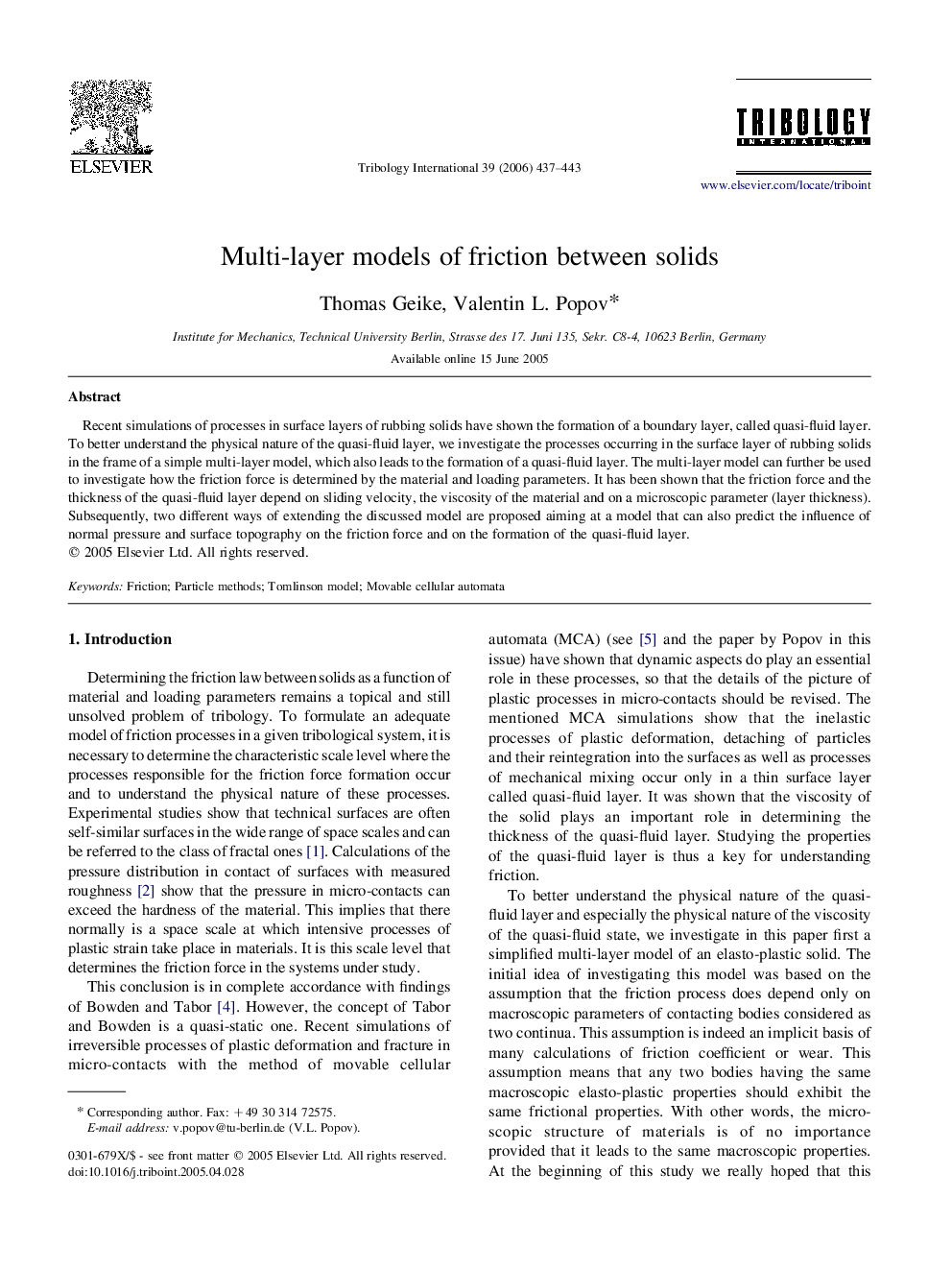| Article ID | Journal | Published Year | Pages | File Type |
|---|---|---|---|---|
| 616810 | Tribology International | 2006 | 7 Pages |
Abstract
Recent simulations of processes in surface layers of rubbing solids have shown the formation of a boundary layer, called quasi-fluid layer. To better understand the physical nature of the quasi-fluid layer, we investigate the processes occurring in the surface layer of rubbing solids in the frame of a simple multi-layer model, which also leads to the formation of a quasi-fluid layer. The multi-layer model can further be used to investigate how the friction force is determined by the material and loading parameters. It has been shown that the friction force and the thickness of the quasi-fluid layer depend on sliding velocity, the viscosity of the material and on a microscopic parameter (layer thickness). Subsequently, two different ways of extending the discussed model are proposed aiming at a model that can also predict the influence of normal pressure and surface topography on the friction force and on the formation of the quasi-fluid layer.
Related Topics
Physical Sciences and Engineering
Chemical Engineering
Colloid and Surface Chemistry
Authors
Thomas Geike, Valentin L. Popov,
